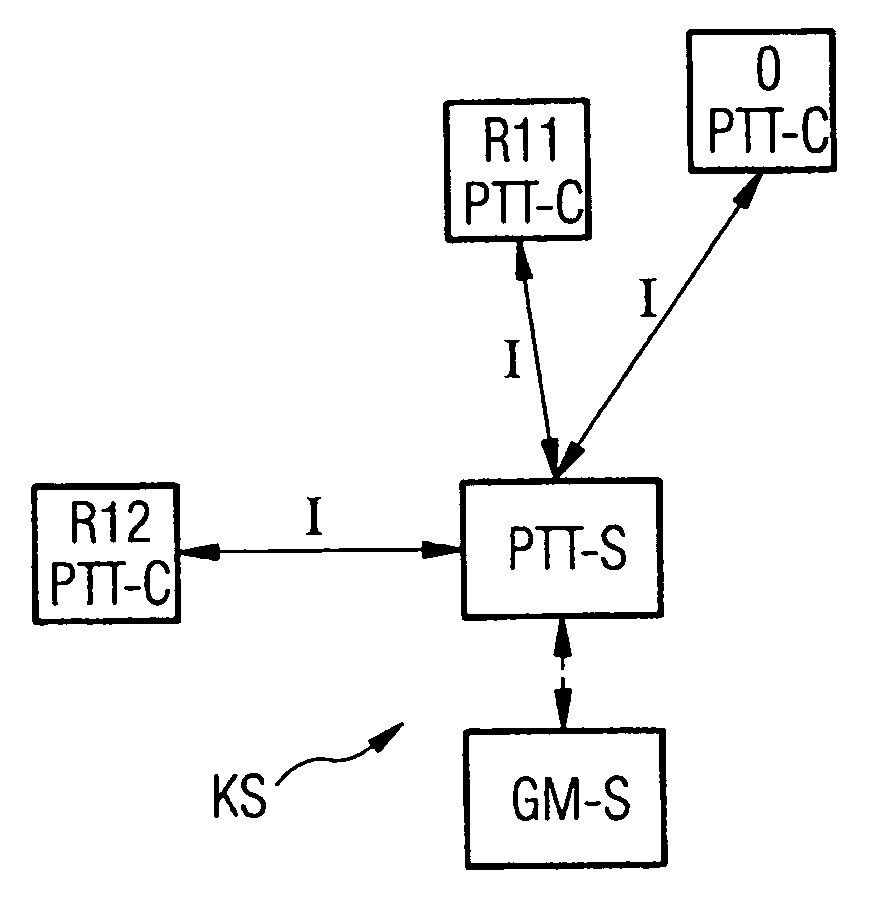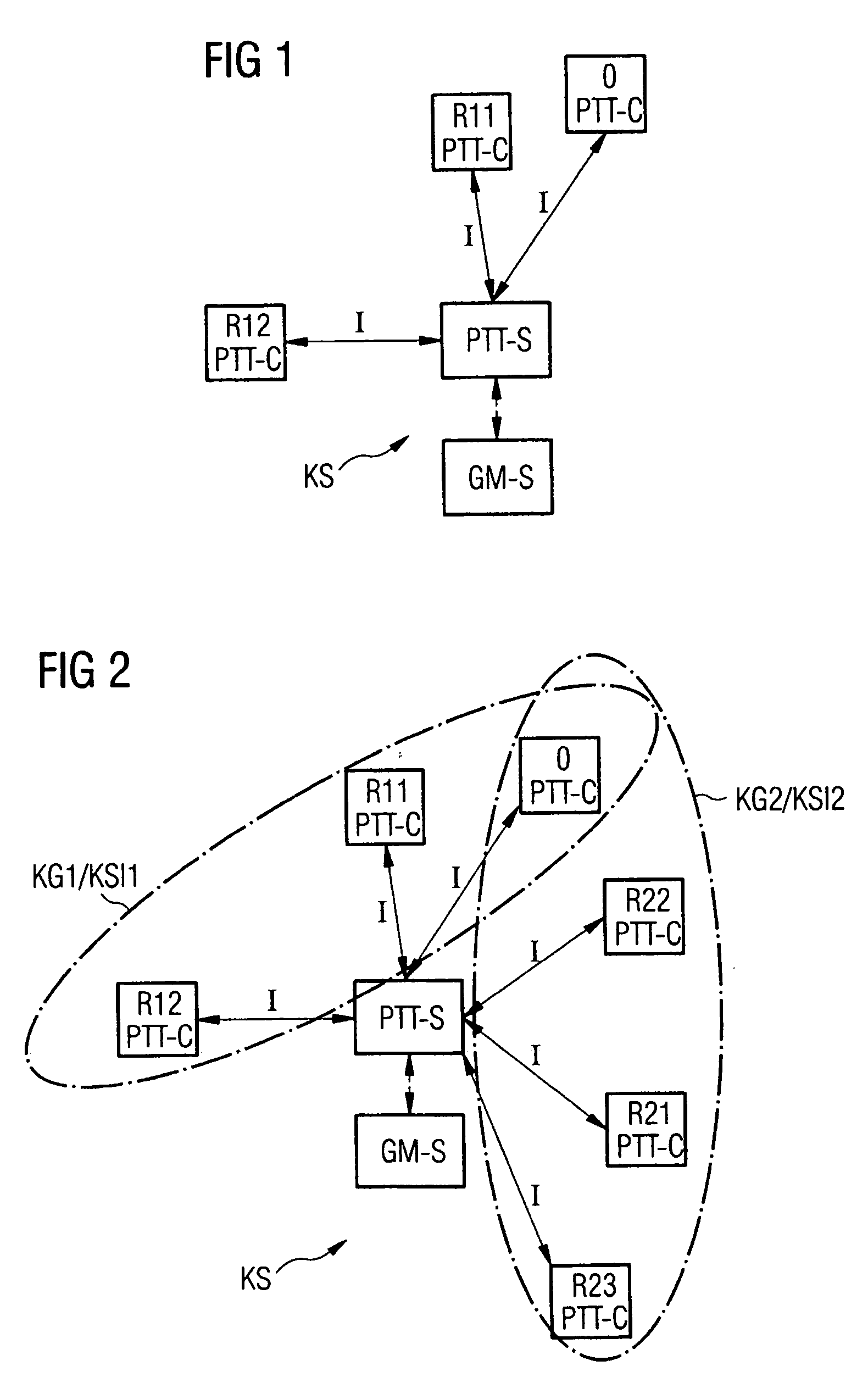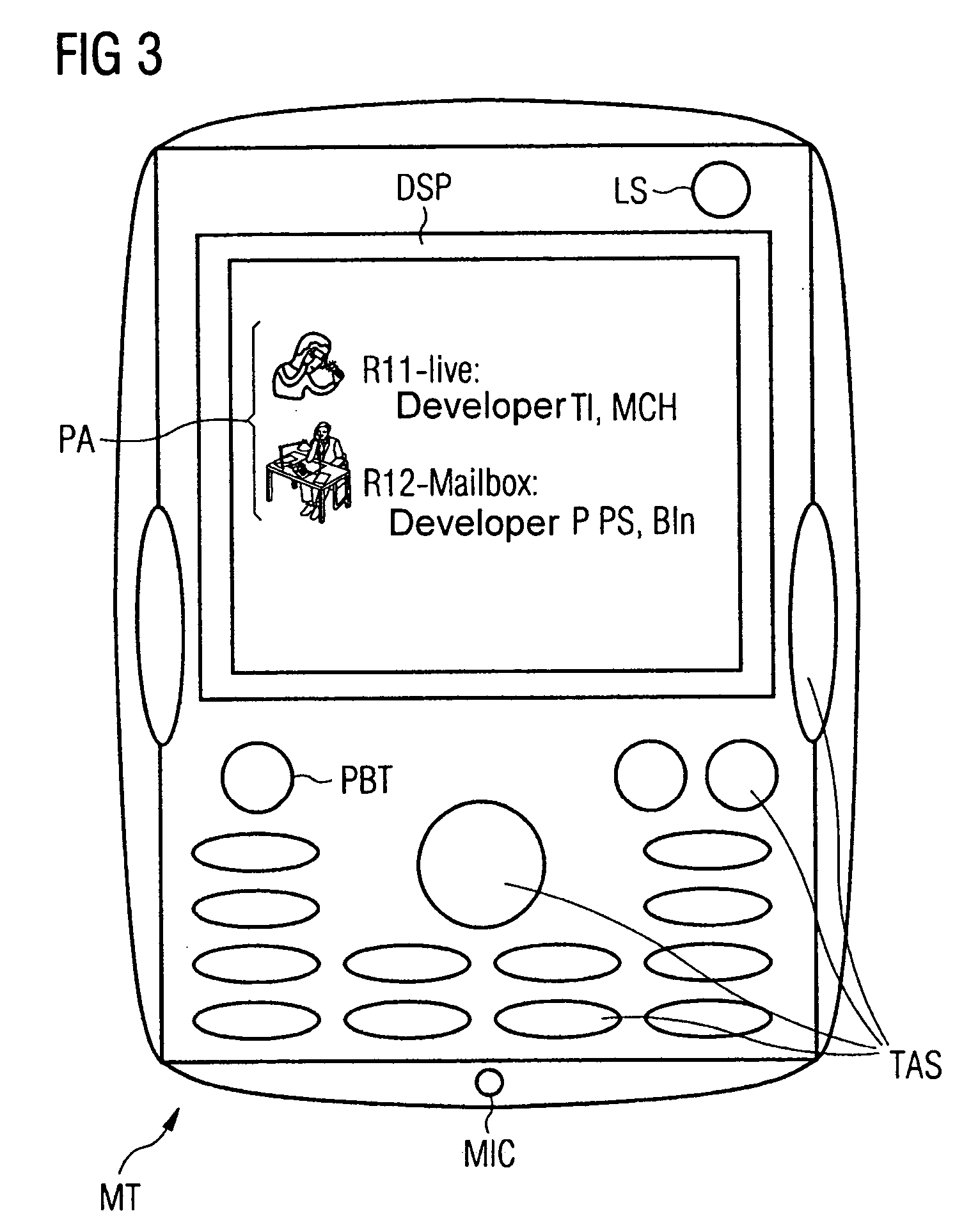Method for managing communication sessions
a communication session and management technology, applied in the field of communication session administration, can solve the problems of only ever being involved by the user with his mobile radio device, and not being able to participate in a number of ptt sessions simultaneously, and achieve the effect of saving “air traffic”
- Summary
- Abstract
- Description
- Claims
- Application Information
AI Technical Summary
Benefits of technology
Problems solved by technology
Method used
Image
Examples
Embodiment Construction
[0033] In the mobile radio standard UMTS there is provision for many packet-oriented services. The difference between packet-oriented and circuit-oriented services primarily lies in the fact that, with packet-oriented services, there is no permanent connection between a sender (a first mobile radio device or mobile telephone) and a recipient (of a second mobile radio device or mobile telephone) as is usual in voice telephony, but that the sender sends individual data packets that are provided with the address of the recipient of the packet in each case. This means that there is a logical connection between the sender and the recipient(s), but no direct physical connection Most data and multimedia services are packet-oriented. Speech on the other hand is mostly transmitted in circuit-switched mode because of its duplex capabilities and the stringent real time conditions. However there are also speech services in which packet-oriented transmission takes place, for example the “Voice-o...
PUM
 Login to View More
Login to View More Abstract
Description
Claims
Application Information
 Login to View More
Login to View More - R&D
- Intellectual Property
- Life Sciences
- Materials
- Tech Scout
- Unparalleled Data Quality
- Higher Quality Content
- 60% Fewer Hallucinations
Browse by: Latest US Patents, China's latest patents, Technical Efficacy Thesaurus, Application Domain, Technology Topic, Popular Technical Reports.
© 2025 PatSnap. All rights reserved.Legal|Privacy policy|Modern Slavery Act Transparency Statement|Sitemap|About US| Contact US: help@patsnap.com



